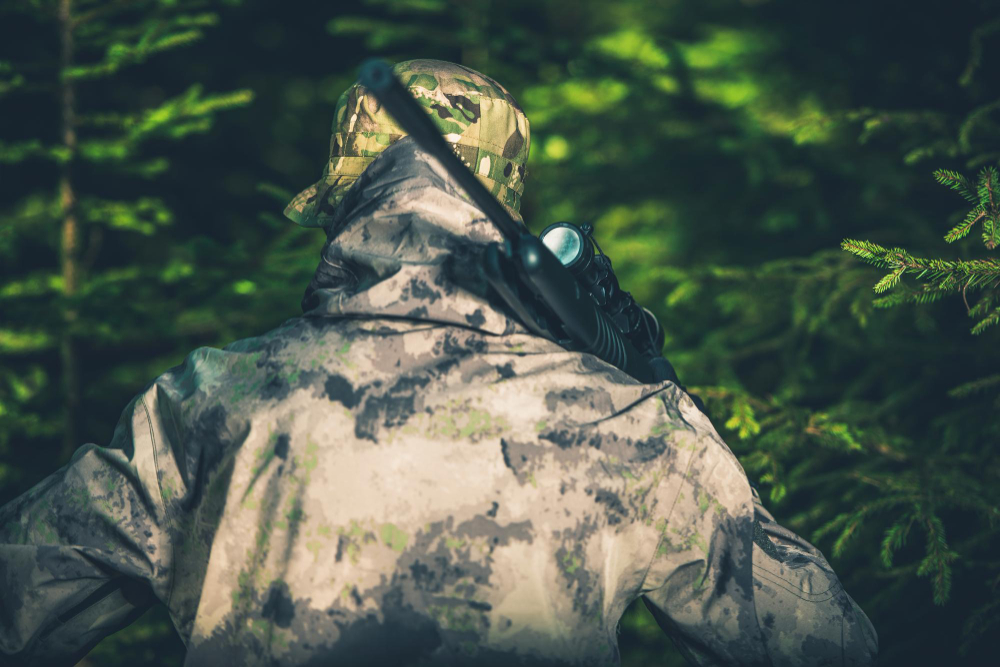Camo for Turkey Hunts: A Complete Guide



Successful turkey hunts require more than just a good shot and a bit of patience. Turkeys have exceptional eyesight, capable of detecting the slightest movement or out-of-place color from a distance. This is why selecting the right camouflage is one of the most critical aspects of your hunting preparation. Wearing the wrong pattern can give you away before you even have a chance to call in a gobbler.
This guide will walk you through everything you need to know about choosing the perfect camouflage for your next turkey hunt. We'll explore how to match your camo to different environments, understand the importance of color and pattern, and provide practical tips to help you stay hidden. By the end, you'll be equipped with the knowledge to blend seamlessly into your surroundings and increase your chances of a successful hunt.
Unlike mammals, which have limited color vision, turkeys see in full color, much like humans. They can even perceive ultraviolet (UV) light, which means certain fabrics and detergents can make your clothing glow in their eyes. Their vision is their primary defense mechanism, allowing them to spot predators from hundreds of yards away.
When you're out in the field, you're not just hiding from the turkey's sharp eyes; you're also trying to break up your human silhouette. Turkeys are masters at recognizing shapes that don't belong in their natural environment. Effective camouflage uses patterns and colors to mimic the surrounding foliage, making your form blend into the background. This allows you to get closer and remain undetected, giving you the critical advantage needed to make a clean, ethical shot. For hunters planning turkey hunts in areas like Orlando, FL, where the terrain can vary, this attention to detail is non-negotiable.
The single most important factor in choosing camouflage is matching it to the specific terrain you'll be hunting in. A pattern that works perfectly in a dense, green forest will stick out like a sore thumb in a dry, open field. Here’s how to choose the right camo for common turkey hunting environments.
In the early spring, many forests are still waking up from winter. The ground is often covered in dead leaves, fallen branches, and patches of brown, with very little green vegetation.
As spring progresses, the landscape transforms. Trees leaf out, underbrush thickens, and the forest floor becomes a vibrant mix of greens and dark earth. This is a common environment for turkey hunts in Orlando, FL, and other parts of the Southeast.
Hunting in open fields or prairies presents a unique challenge. With less vertical cover, your ability to blend into the ground cover is paramount.
While the pattern is crucial, other factors play a significant role in your concealment strategy.
Your hands and face are often the most exposed parts of your body and can easily give you away. The light tone of human skin stands out dramatically against natural backgrounds. Always wear a face mask or use camo face paint, and never forget a good pair of camouflage gloves. Even a small flash of skin from adjusting your call or raising your shotgun can be enough to spook a wary tom.
The goal of camouflage is not just to match colors but to break up the recognizable human form. Turkeys are hardwired to spot the vertical, symmetrical shape of a predator. Choose patterns with high contrast and large, disruptive shapes that break up your silhouette. Setting up with a good backdrop, like the base of a large tree or a thick bush, will further help to obscure your outline.
Many standard laundry detergents contain UV brighteners that make clothes appear brighter and cleaner to the human eye. To a turkey, which can see UV light, these brighteners can make your clothing glow. Always wash your hunting clothes in a specialized, scent-free detergent that does not contain UV brighteners. You can check your clothes with a blacklight in a dark room; if they glow, it's time for a proper wash.
With your camouflage selected and your gear prepared, the final step is practice. Wear your full camo setup, including your mask and gloves, and practice sitting still for extended periods. Practice raising your shotgun slowly and smoothly. The more comfortable you are in your gear, the less you will fidget and move, reducing the chances of being spotted.
Remember that camouflage is just one piece of the puzzle. Effective calling, scouting, and woodsmanship are equally important. But by mastering the art of concealment, you give yourself the best possible foundation for a successful and memorable hunt.
Choosing the right camouflage is a skill that blends art and science. It requires a keen eye for your surroundings and an understanding of your quarry's incredible vision. By matching your pattern to the terrain, covering exposed skin, and paying attention to details like UV brightness, you can effectively disappear into the landscape.
If you're ready to put your new knowledge to the test on one of the premier turkey hunts in the region, we can help. For guided turkey hunts in Orlando, FL, that offer thrilling action and expert guidance, contact Switchgrass Outfitters today to book your adventure.